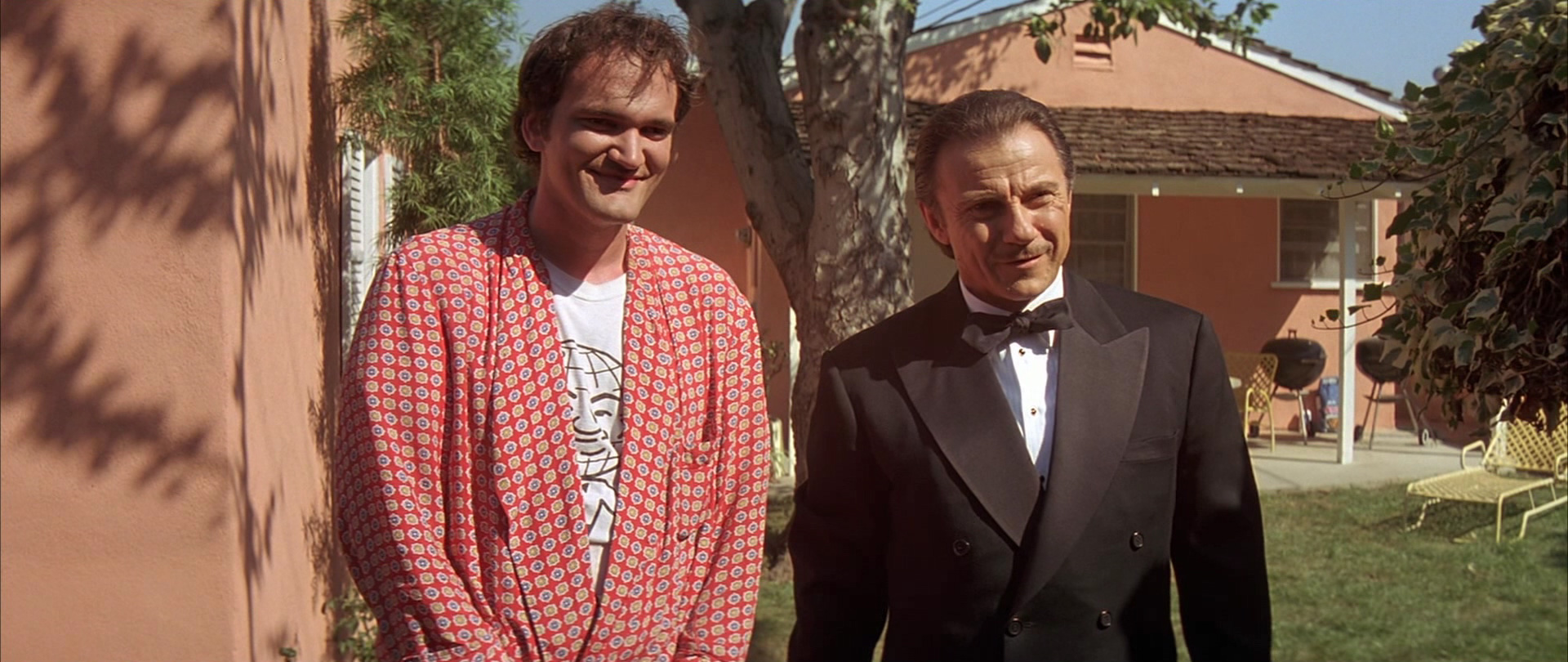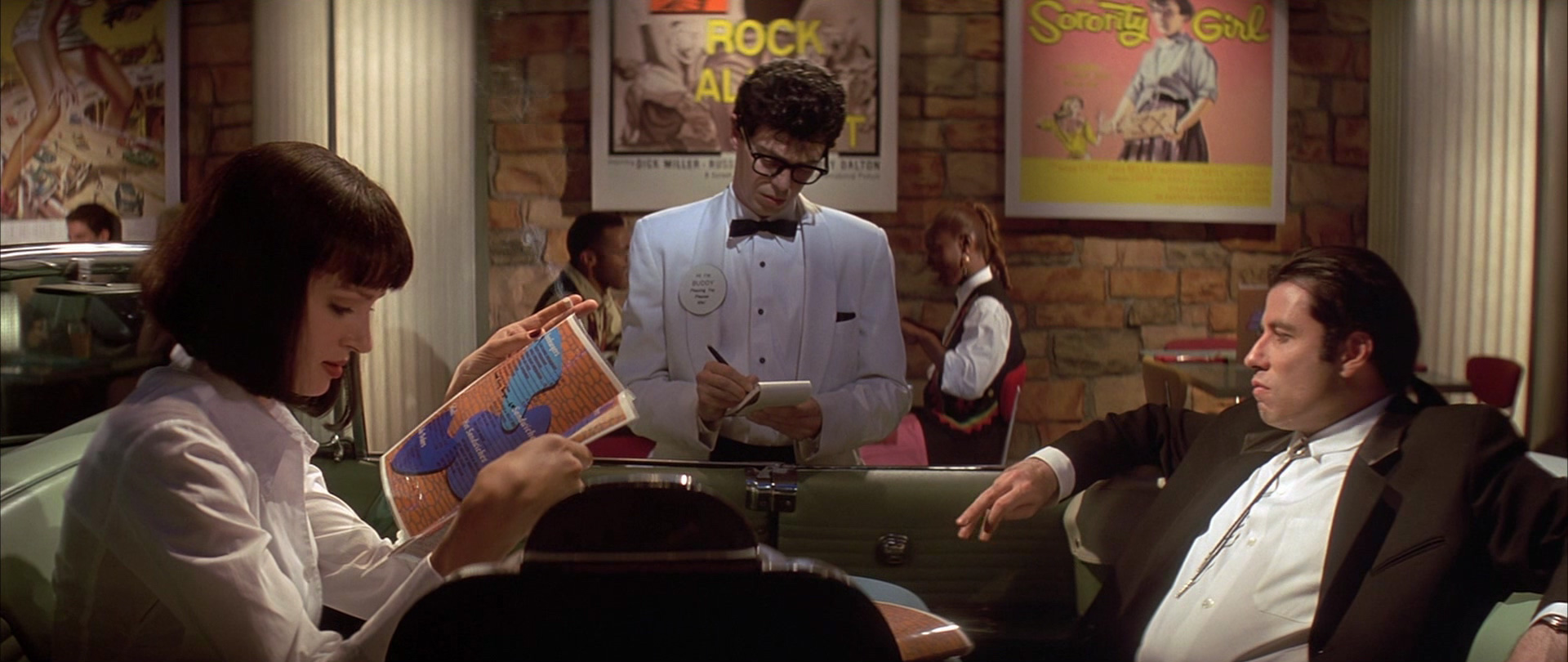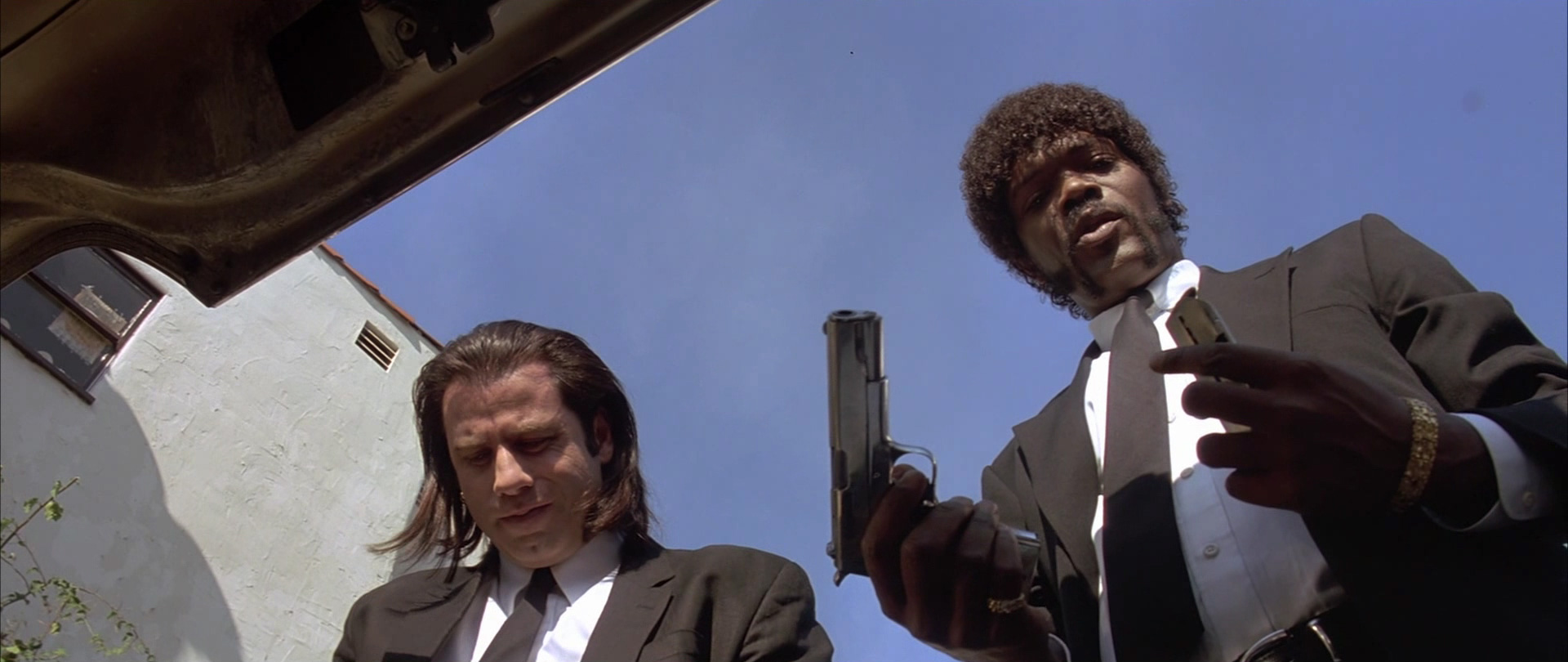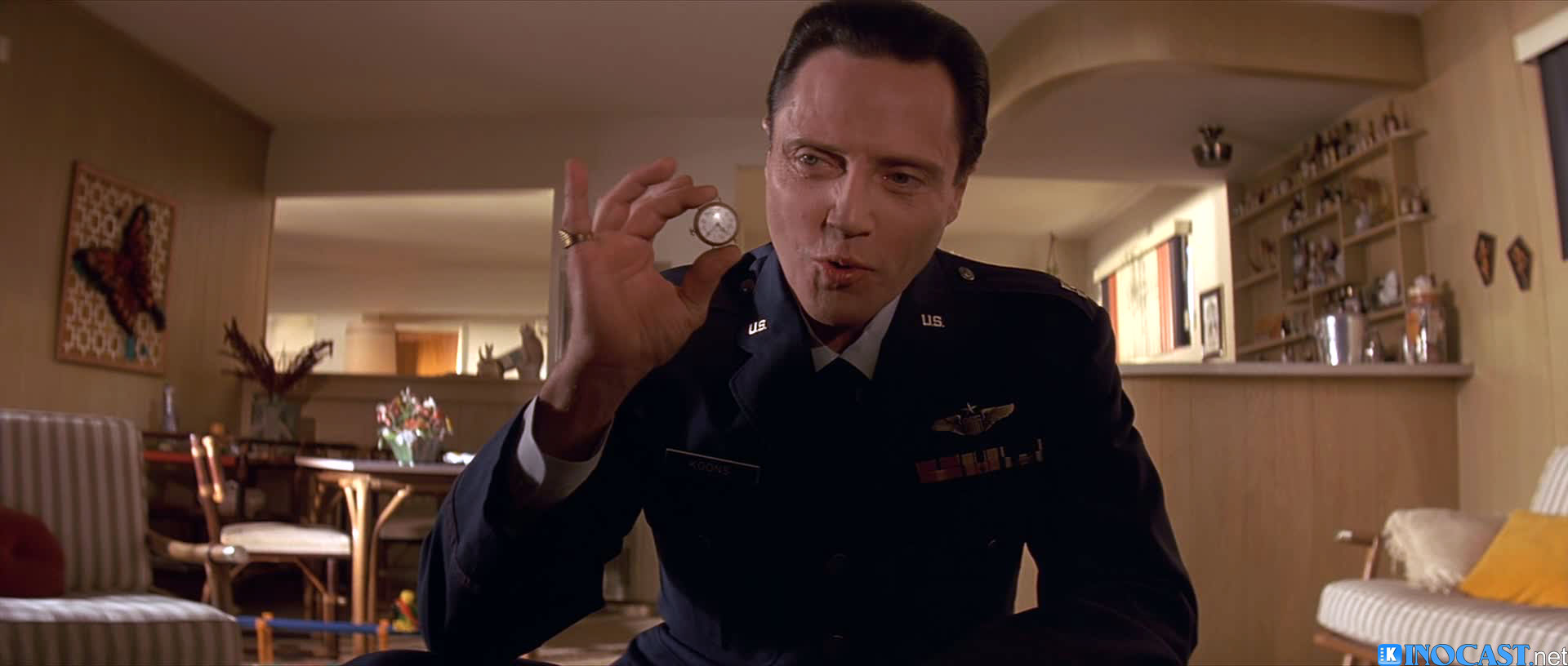Ebert – Great Movies Review 2001

Continuing on the idea of watching the best movies that you can find on Netflix, I come to Pulp Fiction. Of course, Pulp Fiction is the film that simultaneously shot Quentin Tarantino into elite directorial status and cemented his place as one of the most innovative auteurs of all time.
His screenplay is divided into three stories, each introduced with a title card. First, there’s the story of the hit man who has to take his boss’s wife out for the evening while her husband is away. There’s the story of the aging boxer paid to throw a fight and the quest to retrieve a uniquely special family heirloom. Finally, there’s two hit men in a messy situation that needs a quick solution. These three separate stories are intertwined and not told linearly. Each story could easily stand on its own as a short film, but told as they are, each adds a further dimension to the others. The non-linear progression is not simply a gimmick, but rather an essential aspect of the film’s narrative.

Tarantino is a screenwriter well-known for his pop-culture reference laced dialogue that sounds very much like the way most people talk about trivial nonsense. Maybe Tarantino characters all talk a bit like the writer/director himself, but isn’t there some truth to the fact that most of us have very similar ways of talking about these things, at least in the words we choose if not in the rhythms and cadence of our speech?

Another one of the marvelous aspects of Tarantino’s screenplay are the abrupt shifts in narrative. One minute we think we’re watching a revenge plot and the next moment we’ve stepped into a scene from Deliverance. Some have considered this simply a way for Tarantino to toy with the audience, and there may be something to that, but I believe that he’s playing with the audience’s expectations as well as teaching us a thing or two about perspective.
This film has subtly influenced countless film makers in over 20 years since it won the Palme d’Or at the Cannes Film Festival. Tarantino is given credit for this non-linear storytelling, but who says a story has to be told linearly? Novels were playing with disjointed time long before Tarantino came along. In fact, Casablanca has one of the most famous flashback sequences in film history. However, nothing can touch Pulp Fiction for sheer audacity, cultural resonance, and good plain fun.

Back in 1994, Tarantino found himself in a neck-and-neck battle with another great film that you can watch on Netflix, Forrest Gump. Even though he ultimately lost out on Best Director and Best Picture to Robert Zemeckis’ fable during awards season, he at least took home Best Original Screenplay. Oscars aside, Pulp Fiction is an enduring classic that has solidified its place in film history as an incredibly influential piece of work. Of course, it helps that it is also just dripping with a coolness that is hard to quantify.
